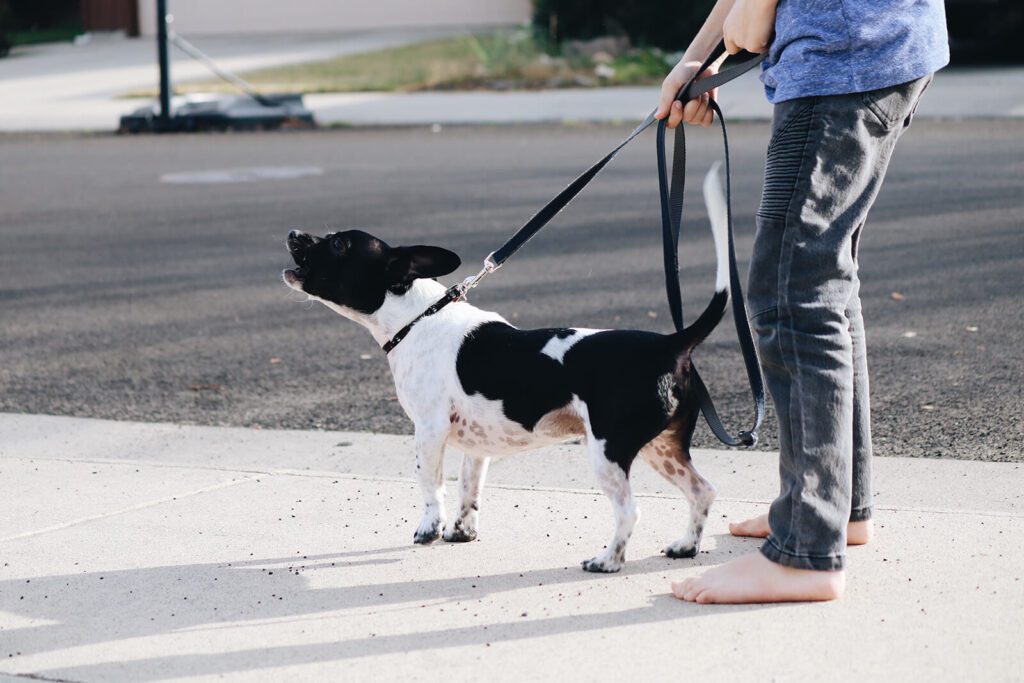Dogs bring joy, companionship, and love into our lives, but they can also present challenges, especially when it comes to behavioral issues. Understanding why these behaviors occur and how to address them is key to building a harmonious relationship with your furry friend. At Precision Dog Training Academy in Kansas City, Kansas, we specialize in helping dog owners manage and correct common behavioral problems. In this blog, we’ll explore some of the most common issues, including barking, chewing, and separation anxiety, and offer practical solutions to help you and your dog live happily together.
Excessive Barking
Barking is a natural behavior for dogs, but when it becomes excessive, it can be frustrating for both you and your neighbors. Dogs bark for various reasons—attention, boredom, fear, or to alert you to something in the environment. Understanding the cause of the barking is the first step in addressing it.
Solutions:
- Identify the Trigger: Observe when and why your dog is barking. Is it triggered by specific noises, sights, or situations? Once you know the cause, you can work on desensitizing your dog to it.
- Teach the “Quiet” Command: Train your dog to respond to the “quiet” command by rewarding them when they stop barking on cue. Use treats, praise, or a favorite toy as a reward.
- Provide Mental Stimulation: Boredom is a common cause of excessive barking. Make sure your dog gets plenty of exercise and mental stimulation through walks, playtime, and interactive toys.
- Avoid Reinforcing Barking: Don’t give in to your dog’s demands when they bark for attention. Instead, wait for them to stop barking and then reward the quiet behavior.

Destructive Chewing
Chewing is a natural behavior for dogs, particularly puppies who are teething. However, when it turns into destructive chewing of furniture, shoes, or other household items, it becomes a problem.
Solutions:
- Provide Appropriate Chew Toys: Ensure your dog has access to plenty of appropriate chew toys. Rotate the toys regularly to keep them interesting.
- Supervise and Redirect: Supervise your dog closely and redirect their chewing to a toy whenever they start chewing on something inappropriate. Praise them when they chew on the correct items.
- Use Deterrent Sprays: Consider using a bitter-tasting spray on items you don’t want your dog to chew. This can discourage them from returning to those items.
- Exercise and Stimulation: A tired dog is less likely to engage in destructive behaviors. Make sure your dog gets enough physical and mental exercise each day.
Separation Anxiety
Separation anxiety is a common issue in dogs, leading to behaviors like excessive barking, whining, chewing, and even attempts to escape when left alone. It’s distressing for both the dog and the owner, but it can be managed with the right approach.
Solutions:
- Gradual Desensitization: Start by leaving your dog alone for short periods and gradually increase the duration. Make your departures and arrivals low-key to reduce anxiety.
- Create a Safe Space: Provide your dog with a comfortable and secure area where they feel safe when you’re not home. This could be a crate or a specific room with their bed and toys.
- Use Interactive Toys: Keep your dog occupied with puzzle toys or treat-dispensing toys when you’re away. This can help distract them and reduce anxiety.
- Consider Professional Help: If your dog’s separation anxiety is severe, consider working with a professional trainer or behaviorist. They can create a customized plan to address the issue.
Leash Pulling
Leash pulling is a common problem, especially in larger, stronger dogs. It can make walks stressful and difficult for both you and your dog. However, with patience and consistent training, this behavior can be corrected.
Solutions:
- Teach Loose-Leash Walking: Start by rewarding your dog for walking on a loose leash. Whenever the leash is slack, praise and reward your dog. If they start to pull, stop walking and wait for them to come back to you.
- Use the Right Equipment: Consider using a front-clip harness or a head collar to help reduce pulling. These tools can give you more control without causing discomfort to your dog.
- Practice in Low-Distraction Areas: Begin training in a quiet, low-distraction environment before gradually moving to more challenging areas. This helps your dog focus on the training.
- Be Consistent: Consistency is key when training your dog to stop pulling. Make sure everyone in the household is using the same techniques and commands.
Conclusion
Dealing with behavioral issues in dogs can be challenging, but with the right approach, patience, and consistency, most problems can be managed or corrected. At Precision Dog Training Academy in Kansas City, Kansas, we’re here to help you navigate these challenges and build a strong, positive relationship with your dog. Whether you’re struggling with barking, chewing, separation anxiety, or leash pulling, our experienced trainers can provide the guidance and support you need to achieve success.






